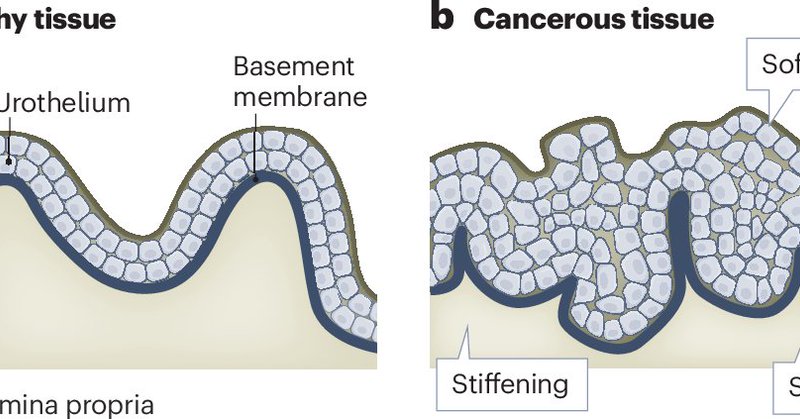
Dagmar Iber
@DagmarIber
Followers
1K
Following
2K
Media
182
Statuses
718
Professor for Computational Biology: data-driven modeling & simulation of emerging phenomena in development & disease https://t.co/3z9nKyvorJ
ETH Zurich
Joined October 2017
Are you a C++ expert and interested in making 3D cell-based tissue simulations with SimuCell3D ever more powerful? Please apply and join us as Master student, PhD student or Post-Doc!! https://t.co/lXRDz5CH5E
https://t.co/vq4BF10hx3
https://t.co/HpvqZeyB1f
Excited to introduce #SimuCell3D, an #opensource 3D cell-based model to simulate large and complex tissues at high resolution. Check out our latest @biorxivpreprint
https://t.co/ZA13Wsvd0g A short summary thread about the software tool:🧵(1/9)
0
9
17
The goal: make it easier for others to reproduce and extend these models within #COMSOL. We hope this serves as a generalisable reference for simulating collective cell behaviour and pattern formation. https://t.co/xlN0bcTc6q Thx to @COMSOL_Inc for implementation support
0
0
1
This complements our earlier work introducing the #DCM model with focus on biological questions & mathematical framework 👉 https://t.co/ZEIaKL3Hrq... Here, we focus on the practical #COMSOL #PIDE implementation: setup, BCs, 1D–3D & Lagrangian reformulation for growth.
1
0
1
Simulating Organogenesis in #COMSOL: Tissue Patterning with Directed Cell Migration 👉 detailed walkthrough of how to implement #DCM partial integro-differential equation models 👉 accessible simulations of tissue patterning and morphogenesis. https://t.co/xlN0bcTc6q
1
2
5
@briscoejames @AKicheva Great to see our paper "Morphogen gradients can convey position and time in growing tissues" now out in @NewtonCellPress
https://t.co/kClzdjvs7p
cell.com
Morphogen gradients are known to guide spatial patterning, but can they also encode time? Vetter and Iber propose that a co-expanding morphogen source generates transient signals, allowing cells to...
0
0
0
Latest work from the group: #FEM @COMSOL implementation & analysis of #PDE model for Directed Cell Migration #DCM Preprint: https://t.co/kWmwJynyNG Tweetorial: https://t.co/RyPlm598CN
#DevBio #PatternFormation #CellMigration #Morphogenesis #ComputationalBiology
1
8
14
Latest work from the group: #PINNverse — a game-changer for parameter estimation in differential equations! 🧠💡 Preprint: https://t.co/Z4RGps3ZaZ Tweetorial: https://t.co/6WKkp2x7nt
#SciComm #MachineLearning #InverseProblems #PINNs
0
0
1
Pleased to see our #mechanobiology paper "Morphometry and mechanical instability at the onset of epithelial bladder cancer" now out @NaturePhysics : https://t.co/ekhwEQBUIa with News & Views "Tissue wrinkles foreshadow cancer" https://t.co/4Uz6rABKhM
0
0
5
🚨 We are thrilled to announce our amazing list of keynote speakers!! @PCusachs
@GeorgHalder
@hirashima0203
@dagmarIber
@johannaivaska
@gijsjekoenderi1
@neuroliege
@renkawitzteam
@Sixt_Lab
@VickySanzMoreno Kit Parker @EdouardHannezo
@creinhartking
@WickstromLab
@MEmilieTerret
0
13
29
Pleased to share our latest review "Coordination of nephrogenesis with branching of the urinary collecting system, the vasculature and the nervous system" https://t.co/sUO3lplime
1
1
2
Thoughtful perspective by Alexander Mietke on our recent work on #bladdercancer @naturephysics1 Tissue wrinkles foreshadow cancer https://t.co/NngwRcUCpH
nature.com
Nature Physics - In a cancer mouse model, wrinkling patterns in bladder-lining tissue differ from their healthy counterparts. Changes in tissue-mechanical properties that alter elastic buckling...
Pleased to see our paper "Morphometry and mechanical instability at the onset of epithelial bladder cancer" now out in @NaturePhysics: https://t.co/ekhwEQCsxI
0
0
3
We present a simple yet comprehensive model integrating multiple mechanical forces to guide lung development. These principles operate during both development and disease, providing a dynamic framework to understand and predict lung remodeling processes.
0
2
9
In #COPD patients, destruction of #lung #tissue leads to #remodelling of the lung tree. Our biophysical model explains the thickening of the airway walls, potentially helping to localize affected areas, and yields quantitative #biomarkers for #PersonalizedHealth.
1
0
5
After the right lung is surgically removed, bronchial trees exhibit enormous plasticity, reorganizing for energy efficiency while regenerating lost tissue volume. ⇨ Fluid–structure interactions act as powerful mechanisms for transmitting information continuously across scales.
1
0
3
Using #SkelePlex, we show that the fractalization of the lung happens on the go during the pseudoglandular stage of lung development. Branch morphology adapts plastically depending on tip number, illustrating how local cues drive efficient lung formation.
1
0
2
Tracking lung remodeling has been a challenge—until now. We developed #SkelePlex, an #opensource tool for tracking bronchial tree growth & regeneration. Validated on: 🐭 Mouse development 🐶 Dog lung regeneration post-surgery 🧑⚕️ #COPD patient cohorts
1
1
6
As flow rate Q depends on tip number, diameter and wall thickness adjust naturally across scales! This universal, #scaleinvariant mechanism enables lungs to function efficiently across species—whether in mice 🐭, dogs 🐶, or humans 🧑⚕️.
1
0
3
We identify key #mechanical #forces that shape the lung’s non-self-similar #fractal structure. Uniform shear stress sets inner diameters D, uniform hoop stress defines wall thickness, while the length-to-diameter ratio L/D leads to equal pressure drops, ∆p, over each branch.
1
0
3
Decades of research uncovered global principles of optimal #lung #morphology: 🔹 Murray’s law balances airflow resistance & dead volume. 🔹 Branch asymmetry enables rapid ventilation. But lungs aren’t designed. What local #selforganizing cues create these #patterns? 🤔
1
0
2



